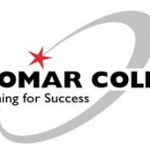- 産業: Education
- Number of terms: 12355
- Number of blossaries: 0
- Company Profile:
Founded in 1946, Palomar College is a public two-year community college in the city of San Marcos, located in north San Diego County, California. Palomar offers over 300 associate degree, certificate programs and is designated by the U.S. Department of Education as an Hispanic-Serving Institution ...
A moist, hairless pad of skin at the end of a nose. This is a characteristic of prosimians (except for tarsiers), dogs, and some other animals.
Industry:Anthropology
A number of conditions that occur together and characterize a particular disease or condition (e.g., Klinefelter syndrome).
Industry:Anthropology
A gamete, either a sperm or an ovum. Sex cells are produced by the meiosis process and have a haploid number of chromosomes. See somatic cell.
Industry:Anthropology
A gene that can be inherited by both genders but is usually expressed differently in males and females. See sex-limited gene.
Industry:Anthropology
A genetically inherited condition in which intestines and other abdominal organs protrude through the central abdominal wall. This must be corrected by surgery at birth.
Industry:Anthropology
A comparatively large structure found in all eukaryotic cells. It contains the chromosomes (nuclear DNA) and is enclosed by a nuclear membrane.
Industry:Anthropology
A non-captive group of primates or other animals that is living in its natural habitat, largely free from constraints imposed by humans.
Industry:Anthropology
A radiometric dating method based on the fact that trace amounts of radioactive atoms, such as uranium and thorium, in some kinds of rock, soil, and clay produce constant low amounts of background ionizing radiation. The atoms of crystalline solids, such as pottery and rock, can be altered by this radiation. Specifically, the electrons of quartz, feldspar, diamond, or calcite crystals can become displaced from their normal positions in atoms and trapped in imperfections in the crystal lattice of the rock or clay molecules. These energy charged electrons progressively accumulate over time. When a sample is heated to high temperatures in a laboratory, the trapped electrons are released and return to their normal positions in their atoms. This causes them to give off their stored energy in the form of light impulses (photons). This light is referred to as thermoluminescence (literally "heat light"). A similar effect can be brought about by stimulating the sample with infrared light. The intensity of thermoluminescence is directly related to the amount of accumulated changes produced by background radiation, which, in turn, varies with the age of the sample and the amount of trace radioactive elements it contains.
Industry:Anthropology
A gene that can be inherited by both genders but is usually expressed in only males or females. See sex-controlled gene.
Industry:Anthropology
